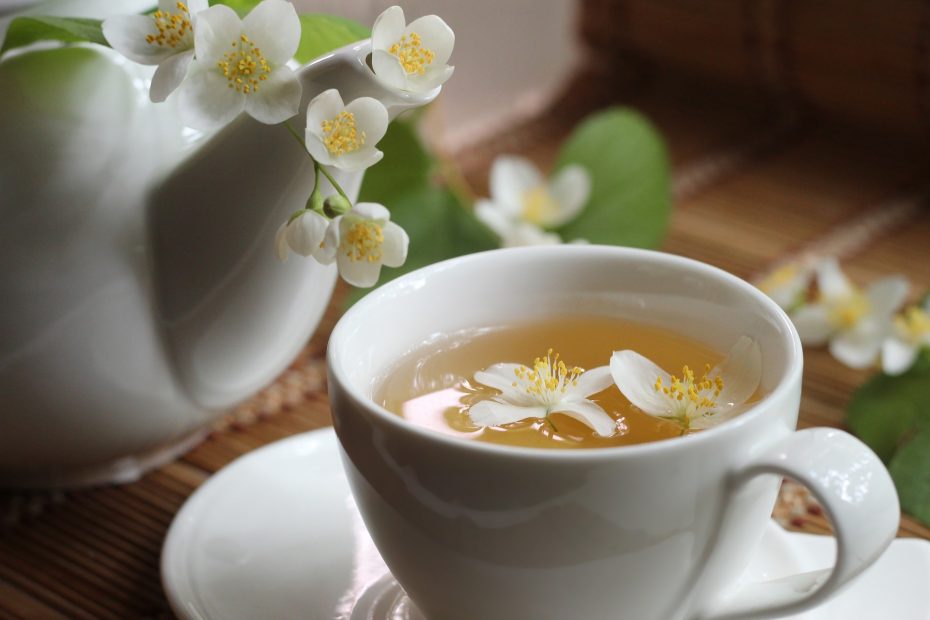The Ming period saw a rise in popularity for the fragrant tea known as jasmine tea in China (1368-1644). The Ming’s fascination with any flower pattern may have contributed to jasmine’s increase in popularity. At that time, intricate floral motifs were used in porcelain decoration, paintings and embroidery. And it was during this era that flowers such as chrysanthemum, osmanthus, orchid and jasmine became established as fine ingredients in the cuisine of the ruling classes.
The trend of flavoring tea continued during the Qing dynasty (1644-1911), during which it became common to flavor tea with the addition of bergamot, lychee and orange.
The great commerce ships of the late 1800s brought jasmine tea (or jasmine tea) to the West, making it likely the first flavored tea to do so. The jasmine scent captured everyone’s attention right away, and it has remained popular ever since.
How Jasmine Tea is produced
The origins of Arabian jasmine (or sampaguita) are fairly certain. The species is successfully farmed throughout much of Asia and Southeast Asia, while it is native to a limited area in the eastern Himalayas that borders Bhutan and India. In addition to being the national flower of the Philippines and one of Indonesia’s three national flowers, it has naturalized in other humid and tropical parts of the world, such as Madagascar, Central America, the Caribbean, and Florida. The sampaguita (or Arabian jasmine) produces flowers year-round, but its most fragrant flowers bloom during the summer.
The category of flavored teas, which we define as including all varieties of teas that have been flavored or perfumed with flowers, fruits, spices, oils, extracts, and natural or synthetic scents, includes jasmine tea. Although the flower is used more for flavoring green tea, there is no shortage of black tea or white jasmine tea productions.
The flowering jasmine plant thrives in conditions similar to those of China’s most famous teas, mainly in high mountains in tropical and subtropical climate zones. At least seven Chinese provinces manufacture jasmine tea, but Fujian is the most well-known.
A jasmine tea (or jasmine tea) is prized for its sweetness, freshly fragrant fragrance, and delicately achieved balance of flavor between the flowers and tea leaves.
This is the process for making traditional jasmine tea:
- Plucking: Tea leaves are plucked in the late spring when they are at their most tender and fresh.
- Drying: Although there are various drying methods, the principle remains the same: tea leaves are dried with hot air to stop oxidation of the leaf.
- Storage: The leaves are kept cool until the end of summer, when the jasmine flowers are ready to be harvested.
- Harvesting jasmine flowers: Jasmine flowers are harvested during the hottest time of summer and at mid-day, when the flowers are closed. When the flowers dry and cool, they open releasing all their produce.
- Flavoring: Jasmine flowers are blended with tea leaves in temperature- and humidity-controlled rooms (or machines). Tea leaves absorb odors very well, and thus form the perfect base for absorbing the scent of the jasmine flower. The flavoring process can be repeated several times, using a new batch of fresh jasmine each time. Depending on the desired outcome, this process can take anywhere between 24 hours and several weeks.
- Cooking: The final mix is cooked, to perfectly dry both the tea leaves and jasmine flowers. The flowers can be removed or left in the tea mixture.
The (traditional) approach outlined is the most labor-intensive but also the most natural. To keep up with the demand for jasmine tea, the tea industry has developed much more competitive methods of flavoring tea. Natural jasmine flavorings or jasmine oil can be used to flavor commercial jasmine tea.
How to prepare jasmine tea
Given the different varieties of jasmine tea on the market, it is always a good idea to ask the seller for suggestions, especially if there are no specific instructions on the package. However, let’s try to give general directions for preparing jasmine tea.
- Use cold filtered water.
- Usually, 70 to 80°C water should be used to make jasmine green tea. If the water is too hot, in fact, you risk getting a bitter and astringent tea. If you do not have a kettle with temperature control, a good method might be to let the boiling water sit for a minute before pouring it over the jasmine tea leaves.
- While keeping in mind the importance of following any directions on the package, the ideal amount of tea to use should be 2 grams for every 200 ml of water.
- Cover the infusing tea to keep the heat constant.
- Depending on the instructions on the packaging, let it steep for between 30 seconds and three minutes.
- A good quality tea can be infused several times, although the jasmine aroma will gradually become less intense.
- Jasmine green tea generally has a fairly mild flavor, so it is advisable not to add milk, lemon, and/or sugar so as not to cover up the original flavor.
